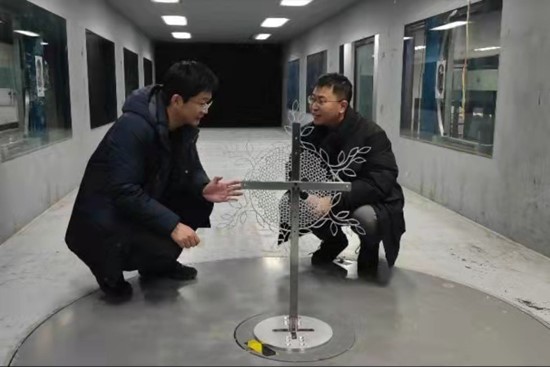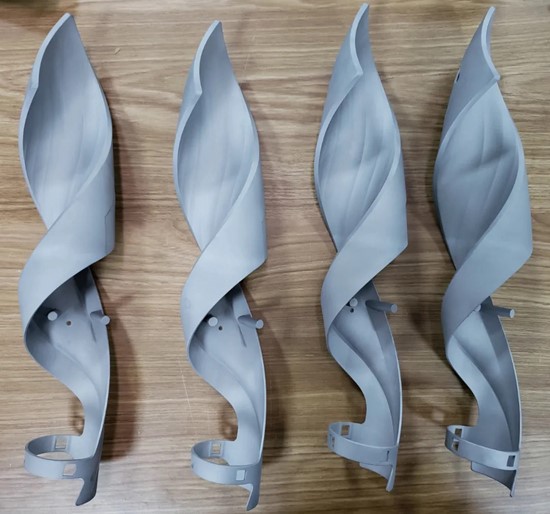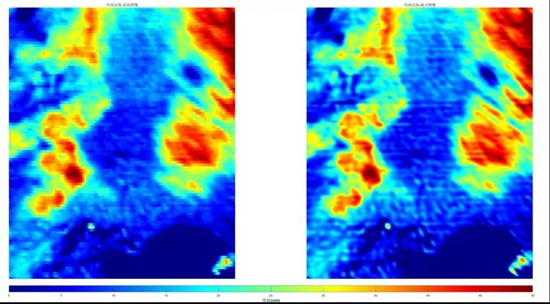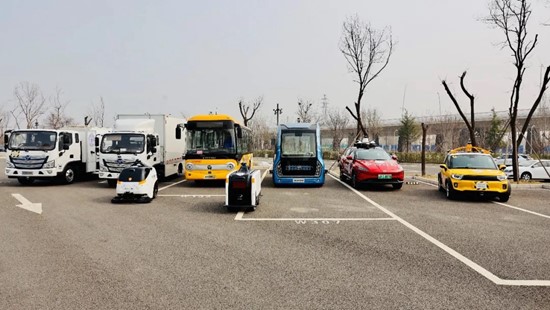Futuristic technologies at Beijing Winter Olympics
 0 Comment(s)
0 Comment(s) Print
Print E-mail China Youth Daily, February 18, 2022
E-mail China Youth Daily, February 18, 2022
Efforts to steady 'huge snowflake' against wind
On Feb. 4, the first day of spring, with the crystal "huge snowflake" cauldron lit up in the "Bird's Nest" National Stadium in Beijing, the 2022 Winter Olympics was launched as scheduled. The "huge snowflake", a perfect combination of art and creativity, is a result of numerous scientific trials and unremitting efforts of a team that made the imagination a reality. The team is comprised of wind experts from Beijing Jiaotong University who understand, analyze, and utilize wind.

Since 2018, Professor Li Bo, director of Wind Tunnel Laboratory at Beijing Jiaotong University, has led his team to participate in the construction of Olympic venues, development of auxiliary training systems for athletes, and preparation for the opening ceremony of the Olympics. Their job was to minimize the impact of wind on Olympic venues.
In July 2021, informed by the Beijing Organising Committee for the 2022 Olympic and Paralympic Winter Games (BOCOG), Li Bo needed to test the ignition plan of the "huge snowflake" cauldron. The original plan was to lower the "huge snowflake" from the top of the stadium to the ground and lean it backward, and after torchbearers put the torch into the cauldron, the "huge snowflake" would rise upwards and spin. Based on his experience on enhancing the wind resistance capacity of parade floats at the 70th anniversary of the founding of the People's Republic of China and red arches at the centennial celebration of the birth of the Communist Party of China, Li Bo realized that it was imperative to form a research team to design feasible plans as soon as possible to ensure that the cauldron could be successfully lit up.
In the beginning, the original model of "huge snowflake" was too light to stand a traditional wind tunnel test. After many corrections, the team finally developed a high-fidelity scale model made up of aluminum alloy by using 3D printing technology. Designers of the cauldron were also impressed by its authenticity.
After multiple tests, the team found that the "huge snowflake" would swing even with a light wind, and torchbearers would not be able to put the torch into it. Eventually, the team suggested that the "huge snowflake" should be hung on the top with a hanger bracket to ensure its motionlessness so that the cauldron could be successfully lit up.
Inside stories about zero-emissions torch of Beijing Winter Olympics
On the evening of Feb. 4, a grand opening ceremony of Beijing Winter Olympics was held at the National Stadium. As the final torchbearers placed the zero-emissions torch into the heart of the "huge snowflake", the "flake" burst into a spectacularly bright scene. The high-tech-driven torch is credited to the research team led by Professor Su Yanqing from School of Materials Science and Engineering at Harbin Institute of Technology, who utilized 3D printing technology to develop the torch with zero-emissions.

Professor Su and his team tested and improved a variety of 3D printing materials, optimized the moulding process of the internal structure of the torch, and after a systematical verification, developed the 3D printing process of the burner. With ceaseless efforts, they finally produced the hydrogen-powered torch and its combustion system that fully met the requirements and ensured the reliability of the combustion of the main torch for the Olympics.
Meanwhile, to ensure the appearance quality and the combustion effect of the torch, in addition to its dimensional accuracy, they needed to make sure that the density of the internal structure of a 3D printed torch approximates that of a forged torch, and therefore, the requirement of hermeticity of the internal burner and the requirement of surface finish will be met. Professor Su's team, in collaboration with HIT 3D Additive Technology Co., Ltd., improved 3D printing devices and developed new printing processes which furthered the printing efficiency and the internal quality of the printed torch, and met all the manufacturing requirements.
'CT scan' for atmosphere over Winter Olympic venues
Each sport event, including alpine skiing, ski jumping, and cross-country skiing, is inextricably linked to the weather, so the accurate information of wind direction, temperature, humidity and various other factors is of paramount importance to the event security. Academician Zhang Jun and the team led by Lyu Xin and Hu Weidong from the School of Integrated Circuits and Electronics of Beijing Institute of Technology (BIT) cooperated with the National Satellite Meteorological Center. They procured the remote sensing data of the Beijing-Zhangjiakou area via the Fengyun-3 meteorological satellites, providing for the Winter Olympic Games the accurate weather forecast about the temperature, humidity, wind field, and snowfall at the venues.

"To make predictions about the weather during the Winter Olympic Games entails sufficient weather data first, which requires the Microwave Radiation Imager (MWRI) carried by the Fengyun-3 meteorological satellites to gain access to massive amounts of information," the team leader Hu Weidong said.
Fengyun-3 meteorological satellites are able to observe the atmosphere all-weather and all-day, and in terms of detection bands, achieve a full spectrum of ultraviolet, visible, infrared, and microwave detection of the atmosphere. Aided by the powerful Fengyun-3 meteorological satellites, the BIT research team can obtain global, all-weather, three-dimensional, timely, and accurate data on atmosphere parameters, surface parameters, and dynamic ocean environment parameters. The team can also get such significant accumulated snow parameters as the depth and water equivalent weight of snow by using microwave terahertz remote sensing technology to detect the MWRI carried by the satellites. So, as it were, the team has done a "CT scan" of the atmosphere with the assistance of the Fengyun-3 meteorological satellites, to fulfil a detailed understanding of every aspect of the atmosphere.
Driverless vehicles in Winter Olympic Park
Different types of autonomous vehicles are shuttling back and forth in the demonstration area at the Shougang Park of the Beijing Winter Olympics. Unlike ordinary ones, these vehicles are driverless. Yet they can skillfully perform obstacle avoidance, path planning, and intelligent scheduling. They are Level 4 self-driving all-weather vehicles developed by Tsinghua University and Shougang Group together with Baidu, Idriverplus, Foton, and other companies.

Since 2018, as the leader of the Beijing Science and Technology Winter Olympics Project, "All-weather Multi-model Automatic Driving Technology Development and Functional Demonstration in Shougang Park (Science and Technology Winter Olympics)", Professor Yang Diange and his team from the School of Vehicle and Mobility of Tsinghua University have developed seven types of driverless vehicles for the Winter Olympics. With consideration of such elements as "vehicle," "road," "cloud," "simulation," and "demonstration," the various vehicles, including minibuses, were designed to work in all weather conditions. Yang and his team also built smart roads in Shougang Park and a cloud-based control and scheduling system for intelligent networked vehicles to realize real-time monitoring and remote scheduling of driverless vehicles.
"Considering the variable and extreme cold weather during the Winter Olympics and the complex traffic conditions in China, the team, based on Tsinghua's multidisciplinary research advantage and working with several companies, has developed advanced all-weather self-driving technology and demonstrated it to the world," Yang Diange said.
The team provides firm and efficient technical support for the 2022 Beijing Winter Olympics self-driving demonstration. The Level 4 self-driving vehicles meet the practical needs of the Shougang Park during the Winter Olympics, including unmanned shuttles, unmanned buses, unmanned cleaning, unmanned document delivery, express delivery, and ride-hailing service.






Go to Forum >>0 Comment(s)